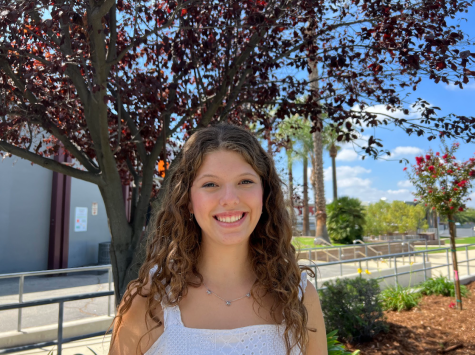Periodic Zoom Calls Worsen the Online School Experience
Impromptu online classes were never expected to be perfect. Teachers and administrators were given very minimal time to arrange a system of online learning and prepare new lesson plans during this unprecedented time. However, as the second semester of remote learning began, the addition of periodic Zoom calls was supposed to create a productive and meaningful learning experience. But as weeks of school continue to pass, this has yet to be proven. Last semester, students completed schooling through only asynchronous activity, meaning pre-recorded lessons and assignments were pushed out to complete as independent work, rather than holding live classes over Zoom. Though the productivity of this method was originally questioned, it has become abundantly clear this was the superior form of online teaching.
The first issue with synchronous learning is the program Zoom itself. Zoom was not created with the specific intent of being used for teaching purposes. Rather, it was created for holding conferences over a digital platform for work and business-related matters. While Zoom comes with features mimicking actions within a normal classroom environment like hand raising, signaling a thumbs up, and breakout rooms, none of them have proven to be of much use. On the other hand, the web services used last semester such as Google Classroom, Big Ideas Math, Canvas, and EMC World Languages were all designed for academic purposes. Though some of those platforms are still being used, many of their best features have now been overlooked. Zoom also has created a whole array of technical issues. Having audio and connection problems has become the new normal for students, and can result in missing class time, losing participation points, or being marked tardy. Teachers are not immune to technical errors either. In their case, students will lose valuable class time and have to add on to their already overwhelming workload.
Asynchronous classes allowed students to learn material at an individualized pace, and create their own personalized schedule. Zoom classes make it difficult for students to stay focused, considering how limited student and teacher engagement is. This results in little to no retained information, leaving students confused as they try to navigate through their hours worth of asynchronous work. When students had been provided with pre-recorded lessons and other resources, they had the option to pause and take breaks when necessary, and learn through interactive online activities that captivated their attention.
When living in a time of such chaos and uncertainty, mental health should be prioritized over schoolwork. As of right now, making it through every day is already tough on its own; schoolwork should not be adding any additional struggles. Many students have expressed feeling overwhelmed by the work given by teachers. It seems the school week has transitioned into this endless cycle of waking up early to attend Zoom classes and working late into the evening to finish the overabundance of asynchronous work. That cycle is extremely draining at the very least, but could also potentially become detrimental to students’ mental health. Teachers and administration need to take the time to reevaluate if this system of learning really has the best interest of students at heart. Though California Assembly Bill 77 mandates schools to meet live instruction requirements, the state should seek student input and make necessary adjustments to the requirements. In the meantime, the Claremont Unified School District needs to investigate how to eliminate the unnecessary stress of the online schooling experience, while still meeting state standards.
While social interaction is undoubtedly an important aspect of a normal school day, the way in which teachers have attempted to recreate it over Zoom is both ineffective and quite frankly, a waste of time. Typically teachers will send students off into breakout rooms to collaborate on classwork, as they would in a normal classroom environment. Though the idea itself is not inherently bad, the execution is flawed. In breakout rooms, it is an awkward challenge to complete work. Over the past few weeks, sophomore Tiffany Casaje has had largely negative breakout room experiences. She feels that the uncomfortable tension tends to prevent work-related conversations from occurring.
“Sometimes you can get put into a group of people who you don’t know, but the people in your group all know each other and end up dominating the conversation, making it uncomfortable to speak up,” Casaje said.
The effort of teachers trying their best to replicate the in-person school experience is very appreciated, but the past weeks have proven it to be unnecessary. However, if classes were being completed purely asynchronously, teachers could instead encourage students to plan a time that fits their schedule to work and interact with those they feel confident speaking to. It would eliminate the worry of speaking up in breakout rooms and ultimately lead to an increase in social interaction and work being completed.
“I’m more likely to get things down if I’m surrounded by people I’m comfortable with,” Casaje said.
Last semester, many parents and students felt concerned towards the lack of live teacher instruction, which is a main reason why periodic Zoom calls were introduced. A more effective solution to this would have been to implement the new office hours program (with extended hours) into the asynchronous activity system. This would allow those who need one on one time with a teacher to receive it, while not eating up the time of those who do not. This choice would greatly benefit teenagers who have priorities above being a student, such as those who have to supervise younger siblings while parents work or maintain a job to support their family.
Periodic Zoom calls were created to try to replicate the structure of a pre-quarantine school day, but seem to be missing a key component; the productivity and learning that took place in classrooms. Though there were doubts at the time, pure asynchronous learning is the best online schooling format that the Claremont Unified School District has explored. Unfortunately, periodic Zoom calls are worsening the quality of online education, and the asynchronous activity-based system has proved its superiority.
Hello there! Our goal is to provide relavent, engaging journalism for readers of all ages. Your donation will support the student journalists of the Wolfpacket at Claremont High School, and will allow us to purchase equipment, print our monthly issues, and enter in journalism competitions. We appreciate your consideration!

Melina Tisopulos is a senior and the Editor-in-Chief of The Wolfpacket. Melina loves to write and intends on studying journalism or English in college....





